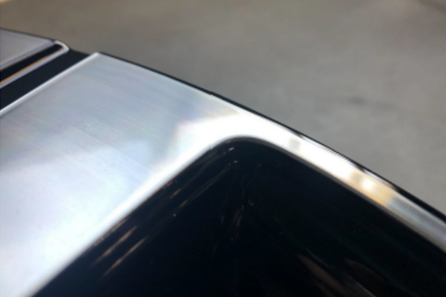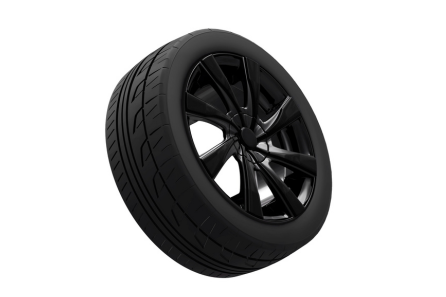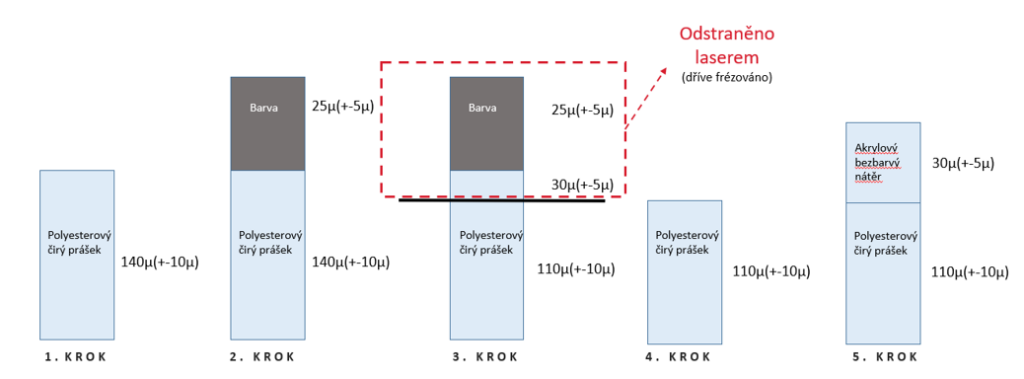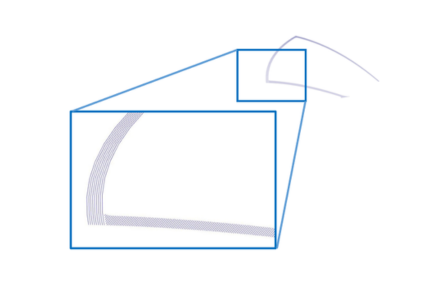For decades, design trends have been reflected in every make and model of car. However, the imagination of designers has often run up against the hard limits of financial or technological feasibility. That said, LASCAM systems have been constantly pushing these limits and coming up with innovative solutions. One solution, for example, impacts the production of aluminum wheel disks.
3D selective paint removal technology pushes the limits in automotive wheel disk production
Many customers really appreciate high-quality aluminum wheels with interesting design motifs. All car manufacturers therefore focus on the appearance of their vehicles and try to provide the widest possible range of motifs and colour combinations. The production of such wheels is normally carried out by complex and relatively lengthy mechanical machining on CNC machines. We were therefore looking for a way to not only speed up the process and make it cheaper, but also to extend its use to areas that are not adapted to mechanical machining. The use of our 3D selective laser paint removal technology, sometimes also referred to as 3D selective decoating, offers remarkable variability and meets the highest quality requirements. At the same time, this process saves material by eliminating the need to create protruding disc surfaces that are then milled by a CNC machine, and it improves the aerodynamics of the entire wheel. How does it all work?
Paint removal process
Each aluminum disk has several coats of paint. The bottom, polyester hardened clearcoat, is a soft base coat that protects the wheel alloy and forms the base layer for the subsequently applied paint. The appropriate paint is then sprayed onto this base layer, which is then covered with a hard, protective, clear acrylic varnish. Laser 3D selective decoating technology enters the process of wheel painting before the protective acrylic paint is applied. The decoating partially removes paint – several tens of μm (20–35 μm) while keeping the primer layer functionally and visually intact. Only after rendering the desired design in the required quality is clear acrylic paint applied to protect the wheel and paintwork against external weather and mechanical influences.
The speed of implementation of one production cycle in the desired design also depends to a large extent on the colour we remove. Different colours have different compositions – and thus properties, which places additional demands on the entire installed system and requires individual process parametrisation to deal with varying absorption and other physical aspects. The fastest process is usually performed on black (benchmark) conversely, with exotic colours, such as blue or silver metallic, the boundary between selective paint removal and damage to the base coat protecting the wheel alloy is very small, and therefore the entire process must always be precisely tuned by our specialists.



Characteristic aspects for 3D selective paint removal technology
Our unique laser 3D technology differs fundamentally from currently known solutions. High laser power is the first difference. Low power lasers (10–200 W) are usually used. Not in our case, however. In order to machine the wheel as quickly as possible and in the required quality, it is necessary to have a sufficiently large marking area and the correct laser focusing distance to create the optimal laser spot (approx. 1 mm). However, this requires high average laser power and high pulse energy to achieve sufficient beam intensity. The required average power therefore ranges from five hundred watts to several kilowatts
A large field of view is another significant aspect and a huge advantage of our proposed installation. It is this ability to accommodate objects up to 600×600×60 mm, with negligible spatial variation at the edges of the working field, which is applied widely in the automotive industry for machining painted aluminum wheels.
A major improvement of the process, however, consists in the use of a camera system with optical evaluation in conjunction with neural networks, which automatically recognises the type of wheel and its position. This, of course, increases the functionality and variability of the entire system, which becomes completely independent of the type of wheel being machined.


In-line solutions with optical analysis
The workstation for the 3D selective paint removal technology is designed as an in-line solution. An aluminum wheel is transported along an automatic belt and then firmly fixed in position under the camera system. The camera detects the type of wheel and records its exact position. It sends this information to the system, which generates for the laser on a given wheel type precise 3D trajectories, transforming them for a particular piece in a specific position. Finally, the process laser head processes the instructions and performs the desired task using a high-power cleaning laser.
Necessary components of the installed equipment include blowing the product with ionised air after the completion of the cycle, thereby preventing the adhesion of flue gases on the wheel, and in particular perfectly adjusting the flue gas extraction system to prevent the absorption or dispersion of the laser beam on these flue gases during the process.
Not only financial benefits
The use of 3D selective paint removal technology developed by LASCAM systems sets completely new standards and opens up possibilities for the automotive industry in the production of aluminum wheels. The new production method reduces the energy consumption of the entire process and significantly shortens the machining cycle of a wheel. It eliminates several existing production steps – the milling of surfaces (constant material thickness from the factory, better wheel aerodynamics), the masking of screw holes and hub seating surfaces before painting, and the need for complex programming. In addition, it makes virtually limitless the palette of possible motifs and shapes that can be rendered on the wheel in high detail. The entire process is also emission-free, therefore contributing to the plant’s CO2 neutrality and its implementation of the ESG strategy.
Unique aspects of installation:
- Large working field of view (usable for objects up to 600x600x60 mm)
- Camera system using neural networks
- High average laser power (average power of 500 W to several kW)
Main benefits:
- Paint removal without damaging the paint base layer protecting the wheel alloy
- Almost unlimited variety of possible themes and shapes
- Elimination of several steps in the production process (milling of surfaces, masking of screw holes and hub seating surfaces before painting, and doing complex programming)
